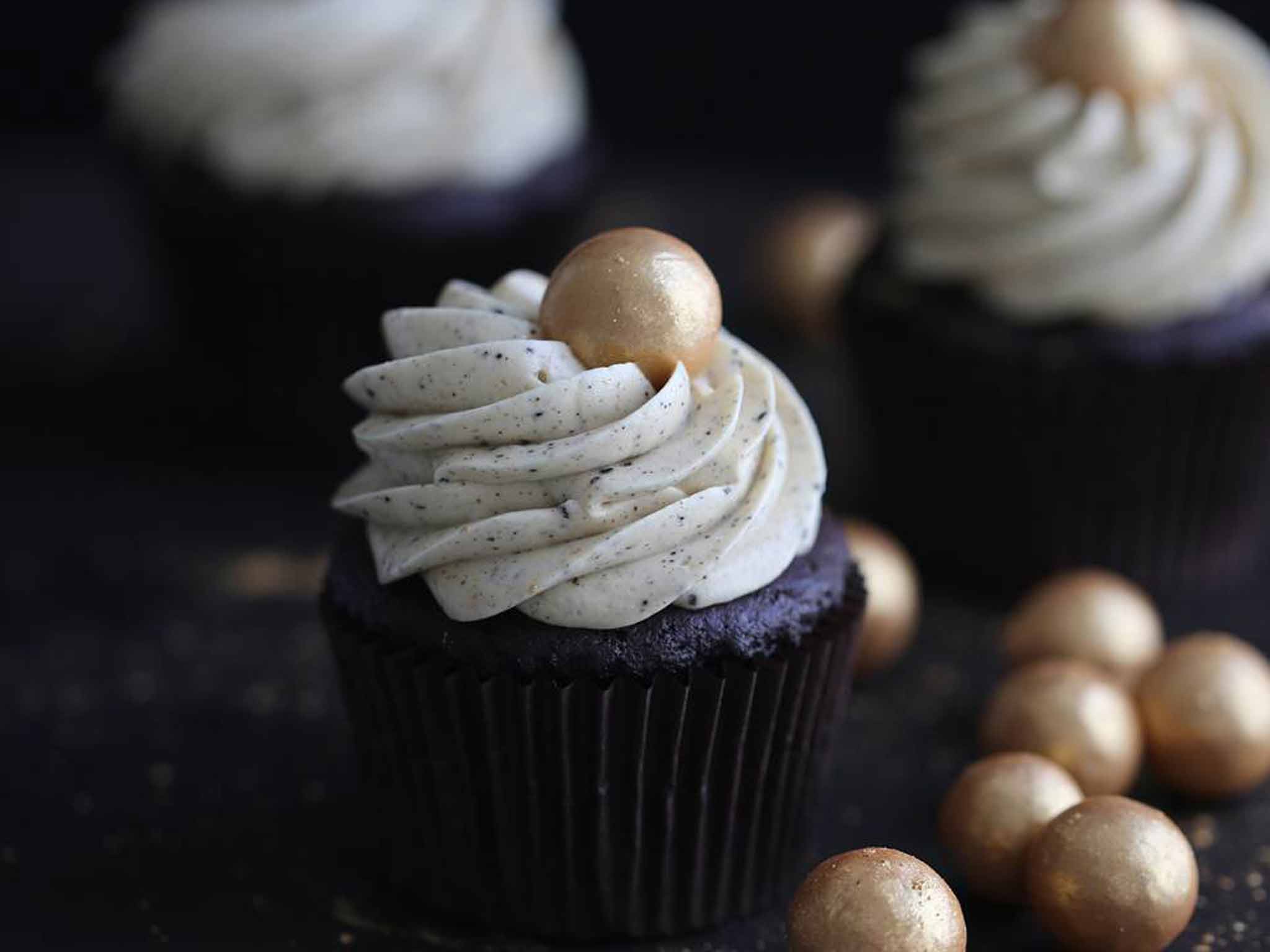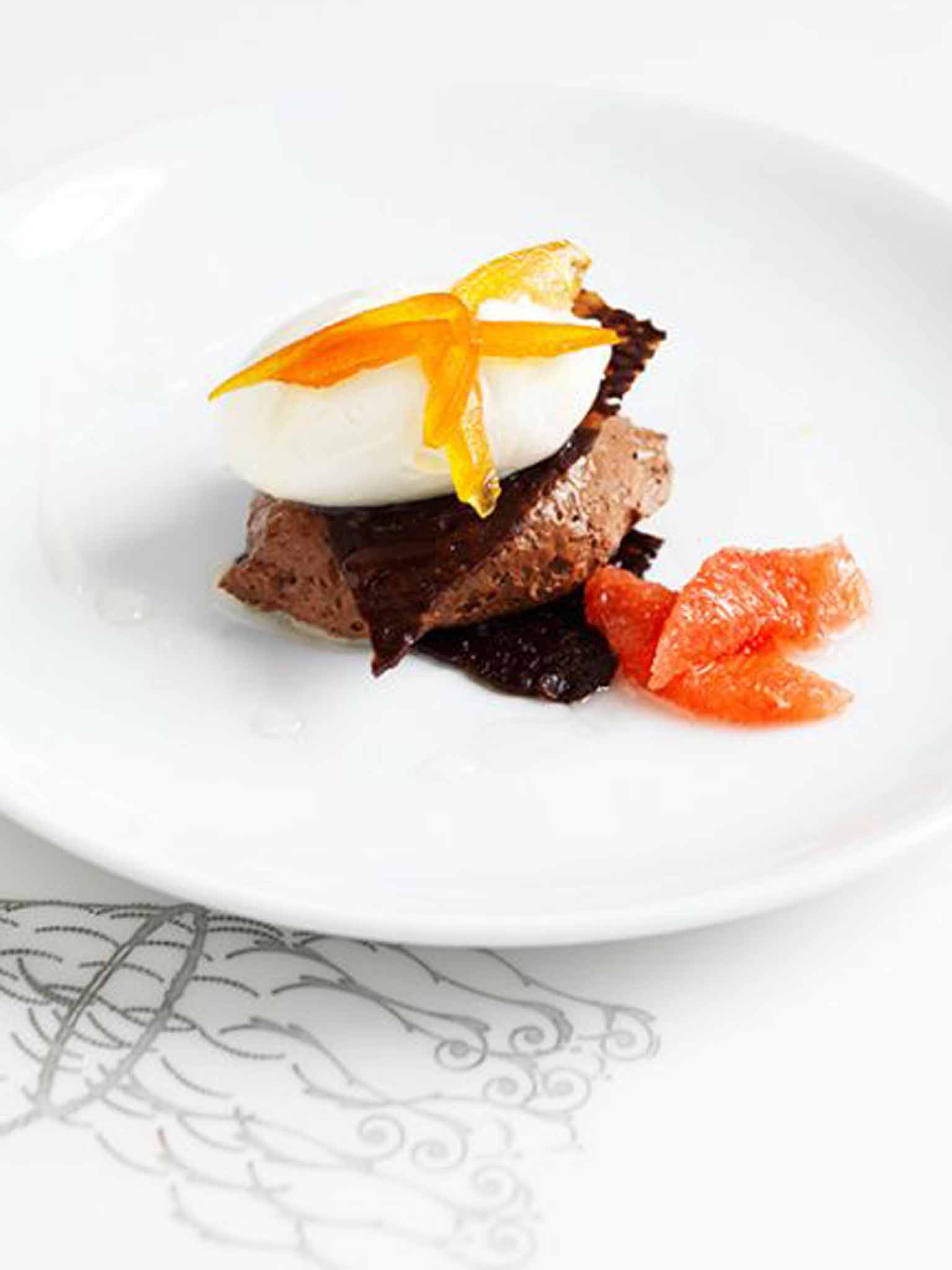Cooking with liquorice: Enjoy its umami kick in both sweet and savoury dishes
Taking our cue from Nigella (not to mention Britain's top chefs), we're rediscovering liquorice

Did you get a black box for Christmas? I don't mean the aircraft flight-recorder type, but a box in which to stash your precious supplies of liquorice. I'm referring, of course, to the black box that Nigella brandished during her most recent TV series, when she was making a liquorice and blackcurrant chocolate cake. Her raptures over her box of black magic prompted howls of derision from tabloids and twitterati along the lines of: “Off to the kitchen to get my liquorice box. Don't tell me you haven't got one!”
Nigella's bizarre box may have provided befuddlement for her viewers and fuel for her detractors. But it also highlights something even more interesting: the growing popularity of the mysterious black stuff inside it.
For most of us, liquorice equates to gaudily coloured Liquorice Allsorts, which apparently got their name around 1900 when a rep for Bassett's, who made them, got his samples mixed up so the company decided to make a virtue of it. Some people, like me, may have tolerated the stick of liquorice in a Sherbet Fountain as a child for the sake of guzzling its powdery casing or, as an adult, sipped liquorice tea and been surprised by its sweet aftertaste. But that's probably about it. With the exception of those living in Pontefract (about which more later), few of us have seen or chewed the liquorice plant's woody roots, which the ancient Egyptians (and numerous subsequent civilisations) chewed or boiled down as a healing drug. Did you know a stick was even found in Tutankhamun's tomb?
Now, though, we're rediscovering liquorice. We're realising it doesn't just have to be cheap confectionary, but can have all sorts (if you'll excuse the pun) of culinary applications. Life-long liquorice loathers are discovering that this ancient root can be incredibly delicious.
Nigella may have helped spread the word – to the extent that the main UK website selling all things liquorice temporarily crashed after her programme – but the main drive for liquorice's growth in popularity comes from Scandinavia, where it is widely used. At Noma, René Redzepi has long been using liquorice as an ingredient in sweet and savoury dishes. In domestic Scandinavian kitchens, the products of the Danish firm Lakrids, such as liquorice powder or drops, and sweet or salty liquorice syrups, are larder staples. In fact, it was a pot of Lakrids' Salty Liquorice Syrup, zealously guarded in her black box, that earned Nigella's most effusive enthusiasm, echoing her earlier excitement over the liquorice-salt combo in her book Nigelissima. “I have expressed my passion for salted caramel elsewhere. But here I must declare my deep, almost deviant, love for salted liquorice,” she wrote. Deviant or not, could salted liquorice replace salted caramel as the next big thing?
The syrups, which blend carefully sourced liquorice with top-quality molasses, make fantastic ice cream toppers, although Peter Husted Sylvest, Lakrids' sales director, also loves them with poached pears and Gorgonzola. The company sources the best liquorice roots from Calabria in southern Italy, Afghanistan and Iran, he says. They are cooked for around 36 hours, reduced to a hard mass and then pulverised. The resulting powder is dissolved in molasses.
“People are always surprised that liquorice is not actually a sweet but a spice. It provides umami to both sweet and savoury dishes,” Peter says. “We've managed to convert a lot of people who thought they hated liquorice. People's palates have been affected by cheap, low-quality sweets. Our gourmet liquorice products are totally different. It's like comparing a Reliant Robin to a Rolls-Royce.”
UK-based chefs are certainly loving liquorice, often using it in savoury dishes. At the Ledbury, Brett Graham includes it in a purée of white onions to accompany pigeon, and roasts meats with it. At the Fat Duck, Heston Blumenthal famously poaches salmon in liquorice jelly. Francesco Mazzei also makes ample use of liquorice which flourishes in his native Calabria. His newly opened Sartoria, in London, offers home-cured baccala marinated in liquorice, while his previous restaurant, L'Anima, was famed for its fillets of wild boar marinated in liquorice, bergamot and chilli.
One of liquorice's fiercest champions is Anna Hansen, the Kiwi chef-owner of the Modern Pantry in London. She had a Danish grandmother so grew up with the black stuff. “Liquorice is a star ingredient, and one that's rarely off our menu,” she says. “It works brilliantly with chocolate. It's also great in berry jams and compotes – raspberry and blackcurrant are particularly good. For savoury dishes, add a dash to a grilled meat dressing or jus, or pop some into a stock for poaching meats.”
Liquorice is also gaining a new lease of life in Pontefract, Yorkshire, where, thanks to the area's rich loamy soils, the root has thrived almost continuously since being brought over by monks as a medicinal herb in the Middle Ages. Later, the town's liquorice was turned into sweets, including its famous Pontefract cakes (see box). But by the 20th century, locally grown liquorice had been replaced by cheaper imports.
Four years ago, Heather and Rob Copley, who are farmers, decided it was time to take Pontefract back to its roots and planted 100 liquorice plants. Last autumn they harvested their first roots – over 5ft long. “Many of Pontefract's over-forties remember chewing the fresh root as children, it's delicious. So we'll be selling fresh liquorice in 6in sticks,” Heather says. She plans to make her own extract for use in cooking, too. The Copleys also intend to seek protected-name status for Pontefract liquorice. “Liquorice is an important part of our heritage, so it's exciting to be growing it again,” says Heather. “People are realising that liquorice is not just a sweet, but an exciting culinary ingredient as well.”
If you weren't lucky enough to be given a black box this Christmas, perhaps you'll invest in one. Or maybe a simple kitchen cupboard will do.
Dark matter: the origins of liquorice
Liquorice was probably brought to Pontefract in the Middle Ages by monks who saw it as an important medicinal plant. More than 50 times as sweet as sugar – hence its Greek name Glycyrrhiza, meaning “sweet root” – it was also used as a sweetener before the introduction of sugar from the West Indies.
By the 17th century, Pontefract's liquorice was being formed into medicinal round disks, or “cakes”, that were chewed. Later a local family, the Dunhills, added sugar to make sweet Pontefract cakes. Over the centuries these cakes were stamped with images such as a castle – representing Pontefract's own – or a gate topped with an owl.
By the outbreak of the Second World War, Pontefract's manufacture of liquorice sweets, including the cakes, had peaked and they were exported worldwide. The town's liquorice growers, however, couldn't supply enough raw liquorice to keep up with demand so some had to be imported. Pontefract growers soon struggled to compete on price, and in 1966 the last liquorice roots were lifted.
Today Pontefract still celebrates its liquorice tradition with an annual Liquorice Festival in July, at which you can try a range of liquorice delights from sweets to ice cream, stout and sausages.

Chocolate liquorice delice By Anna Hansen
Ingredients to serve 6
370ml milk
330ml double cream
5 egg yolks
120g caster sugar
250g dark chocolate 70 per cent, chopped
25g liquorice paste or juice sticks broken into pieces
Wafers and pink grapefruit to garnish
To make the delice, put the milk, cream and pieces of liquorice juice stick (but not the paste if you are using that) into a pan and bring to boiling point. Meanwhile, whisk the eggs and sugar together in a bowl.
Gradually whisk in the hot milk mixture then pour back into the pan and cook gently, stirring constantly until thickened. Pour the hot custard over the chopped chocolate and whisk gently until it has completely melted and the mixture is smooth.
Stir in the liquorice paste now, if using, and then pass through a fine sieve into a bowl. Press some baking parchment or cling film on to the surface to prevent a skin forming and leave to cool, then chill for at least two hours or preferably overnight.
To serve, place a scoop of the delice on each plate, lay a pink grapefruit segment on top, then a wafer and a spoonful of whipped cream.
Join our commenting forum
Join thought-provoking conversations, follow other Independent readers and see their replies
Comments